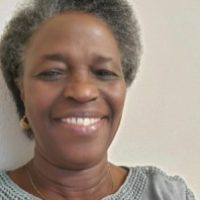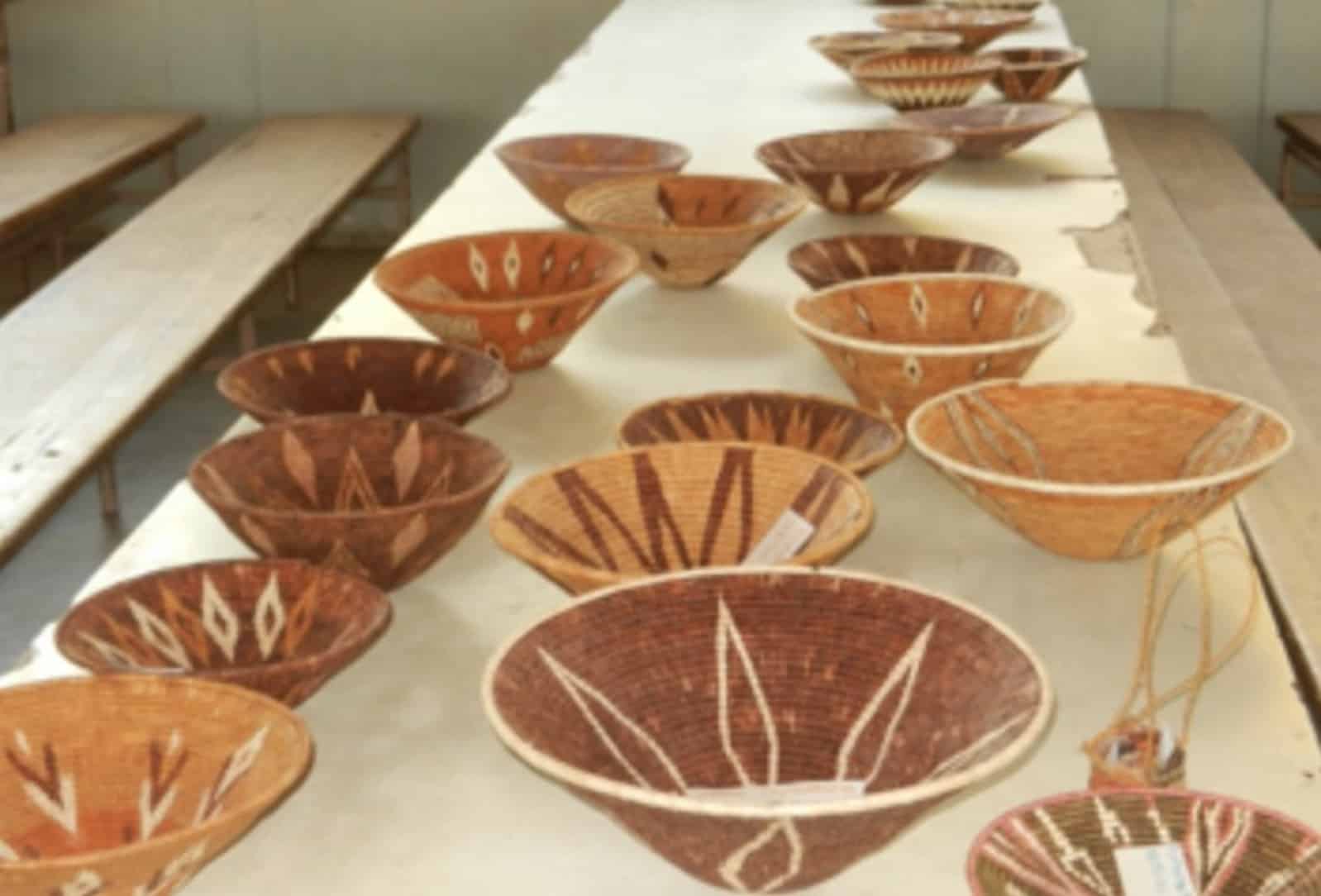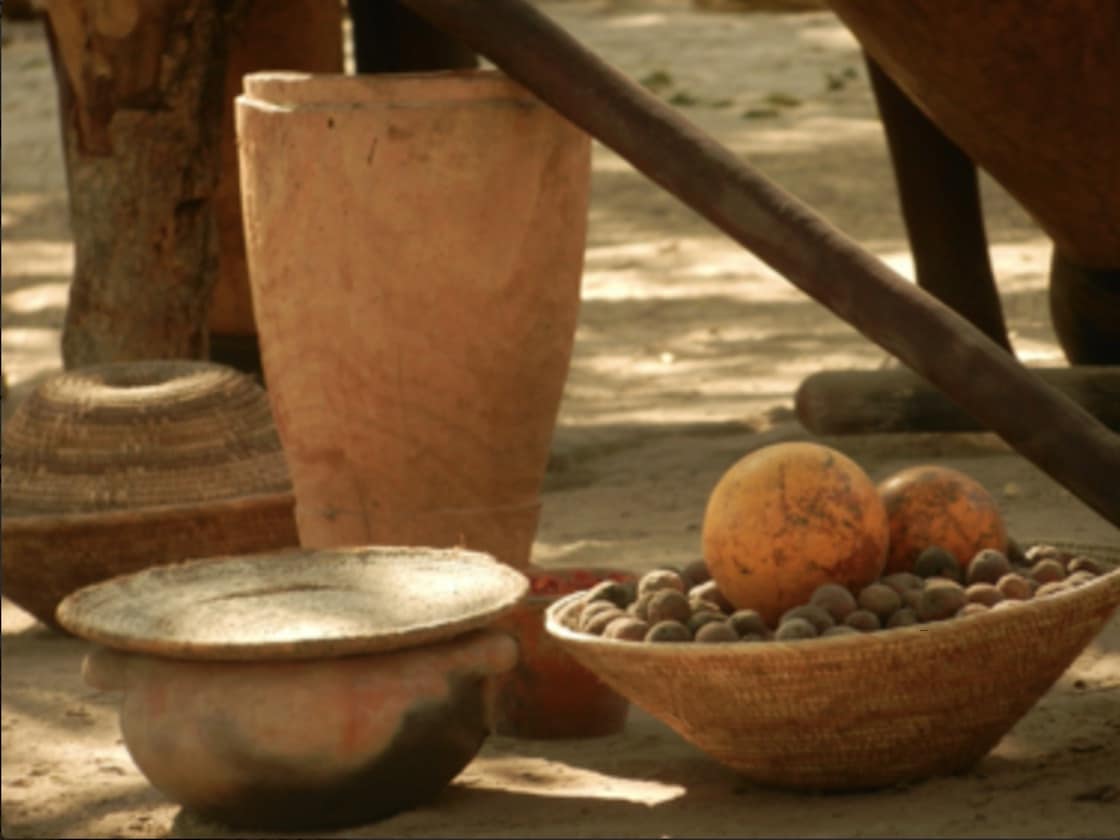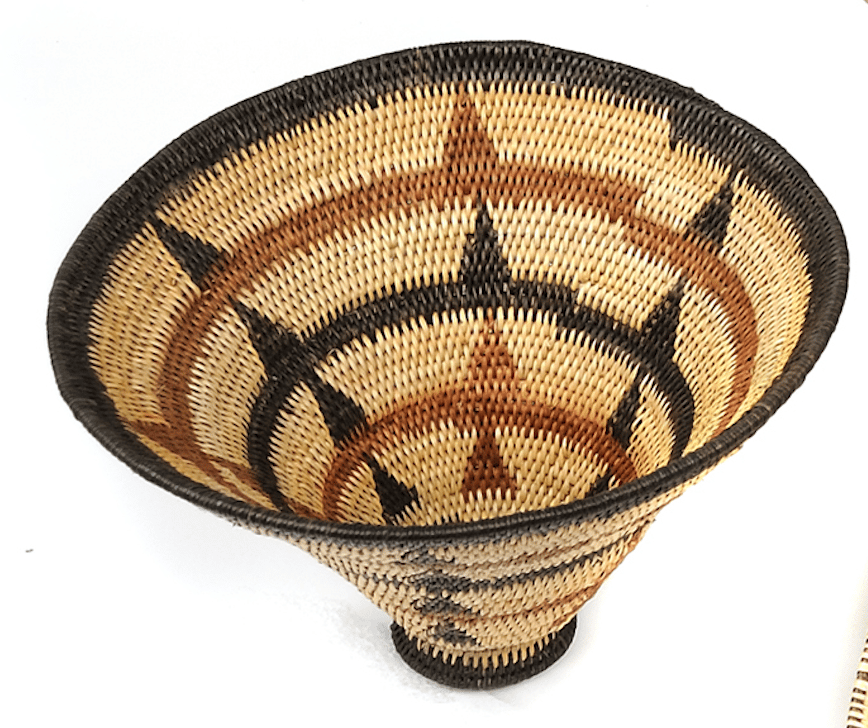My eyes floated towards the display of baskets on the table during my walk through at the Rundu open-air market. I started drifting towards the table, trying hard to communicate in my very limited Rukwangali (the local language) with the young woman behind the table. I bought two baskets from her, and thus began my long connection with the Kavango Art Baskets during my entire Peace Corps service.
I served in Rundu, Namibia, as a Small Business & Entrepreneurship Development (SEED) volunteer. Later, this became known as the Community Economic Development (CED) program. I worked with a group of fifteen disabled persons — blind, hearing impaired or having missing limbs. My goal was to help them set up a bakery as an income-generating project. Rundu is the capital of the Kavango region. The town is situated on the banks of the Okavango River, which flows through Namibia, from the Angolan highlands into the Okavango Delta in Botswana.
Basket weaving in Kavango has been traced back to the early 1900s, when Namibia was a German colony. The colorful baskets are woven from the makalani palm, along with local grasses that grow in the Kavango region. Basket makers use the traditional coil technique to weave baskets. To obtain the shades of brown, purple and yellow colors in the baskets, palm leaves are prepared and placed in boiling water with bark and roots of various shrubs and trees.
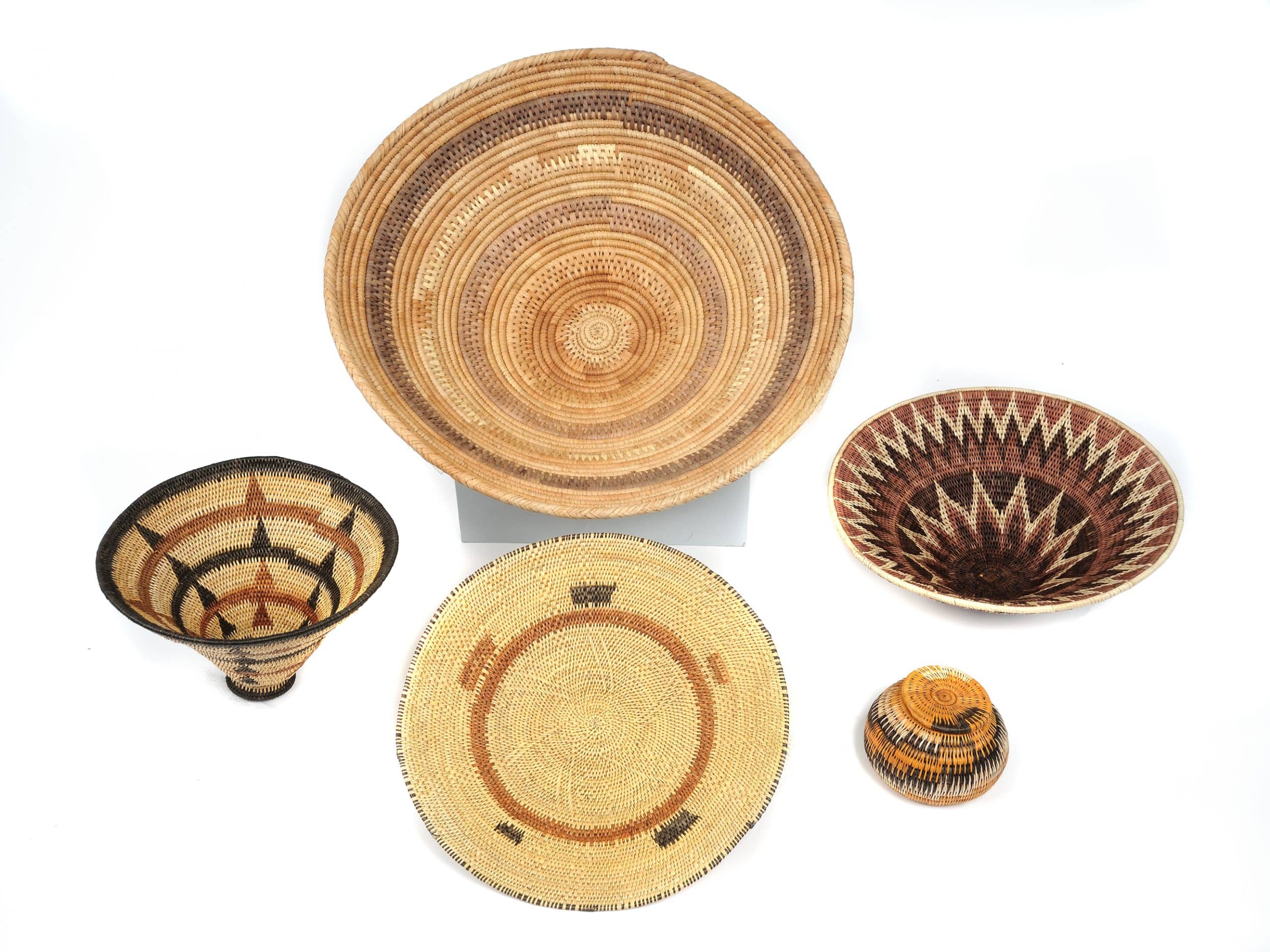
Baskets woven of palms and grasses dyed with Namibian bark and roots
Tradition calls for these baskets to be woven by women in a communal manner as they sit outside their homesteads. The women usually gather under a shade tree and plait leaves together while sharing stories. Often, the women are joined by young girls.
These baskets were originally used for domestic and agricultural purposes in the mahangu (local millet) fields. They were used for harvesting, winnowing, transporting, and storing grain.
I have always loved baskets, especially colorful ones. Before my Peace Corps service, I had collected quite a few baskets from Ghana (the country of my birth), and other parts of the world. I viewed my time in Namibia as an opportunity to serve—and to add to my basket collection. My roommate, a Peace Corps Response volunteer, was coordinating basket production with a local women’s cooperative, known as the Kavango Basket Weavers. She purchased the baskets from the cooperative to sell to trading companies in the U.S. On her basket-buying days, my friend was kind enough to alert me, and I tagged along. I bought lots of baskets for myself, and as gifts for family and friends back in California.
Fortunately, my love for baskets turned out to be a big boost for my bakery project. On my vacation back home at the end of my first year in the Peace Corps, I asked my roommate to organize my own personal basket buying days. I shipped these Kavango baskets to the U.S. and sold them to my church members, to former co-workers, and to neighbors in California.
It was a fair exchange. Instead of having to plead for people to donate money to my bakery project in Rundu, they received a beautiful basket in return for a few dollars. Each buyer knew the money would go to a good cause. I was able to raise enough funds to purchase much-needed equipment for the bakery, and the rest was deposited in the bank as a rainy-day fund for my disabled friends in Namibia.
Today, basket weaving continues in the Kavango region, providing jobs and incomes that support hundreds of families—even whole communities. The bakery also thrives. And just think of it— it was my simple love for baskets that brought these ventures together and gave them a new vitality.

